Now, the title of this post does NOT apply to me. My ancestors hail from Northern Europe and so whenever a sunny day beckons me outdoors, you will find me with my hat and my sunscreen.
What this title does refer to are plants that not only thrive in our full desert sun, but those that can even thrive in areas with hot, reflected heat. Just picture a brick wall, facing west, getting the full force of the sun in the afternoon. Believe it or not, there are quite a few plants that do quite well in the summer sun and seem to be saying “Bring it On”.
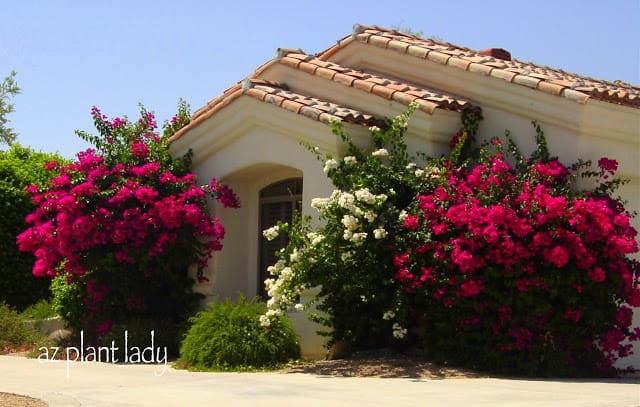
Full desert sun
Most people either hate or love Bougainvillea. If you have a pool – do NOT use this plant as they can be quite messy. That being said, I do love Bougainvillea and have two planted along the back wall that receives afternoon sun. They do extremely well and actually flower more when in full sun.
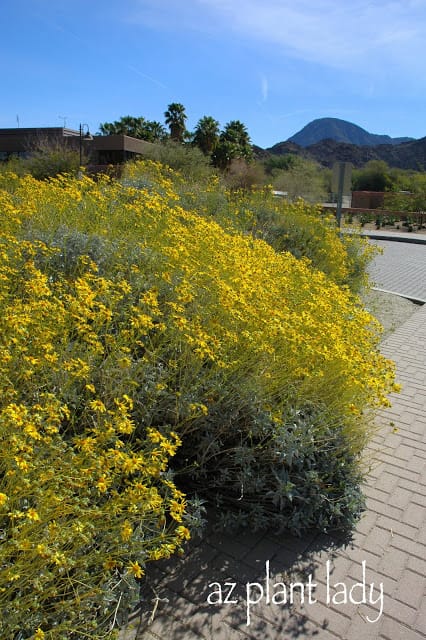
For those who prefer using native plants, Brittlebush (Encelia farinosa) provides beautiful yellow flowers in the winter and spring. Their gray leaves provide a great color contrast to your other plants throughout the year, even when not in flower.
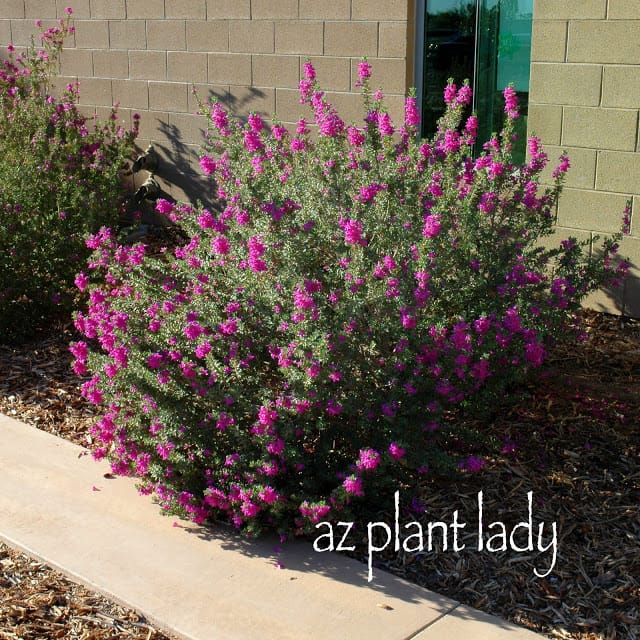
Texas Sage (Leucophyllum frutescens), a native from our neighboring Chihuahuan Desert, is a favorite of mine to use in hot, sunny areas. There are quite a few different Leucophyllum species that come in a variety of leaf colors and offer flowers in shades of purple, pink and white. They can grow up to 6 ft. high and are great for covering up a large expanse of a brick wall.

Red Fairy Duster (Calliandra californica) is a wonderful plant to use in sunny locations. Red flowers are produced year-round, although the heaviest bloom occurs in the spring and fall months. They are a great favorite of hummingbirds.
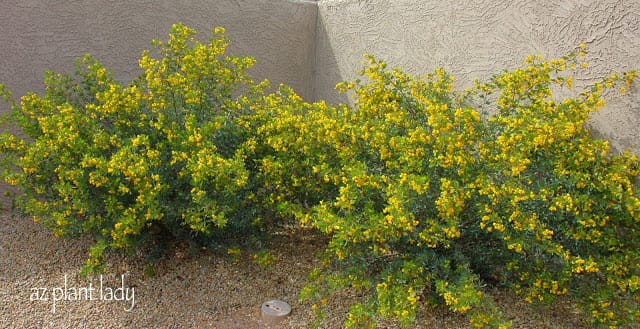
Cassia species are a wonderful export to us from Australia. There are four different species that are commonly found in our area, but my two favorites are Silvery Senna (Senna phyllodenia) and Desert Senna (Senna artemisioides sturtii). Beautiful flowers appear in winter and last through spring.

It is no surprise to those who have read my blog for any length of time that I would add Globe Mallow Sphaeralcea ambigua) to my list of sun-loving plants. The shrub above, is located in my front garden and I will soon be planting some seeds along the wall in my back garden, which faces west and receives full sun all afternoon.

Whether you prefer the green or purple leafed Hopbush (Dodonaea viscosa), both types will grow upright and produce an evergreen shrub that will thrive in the sun.
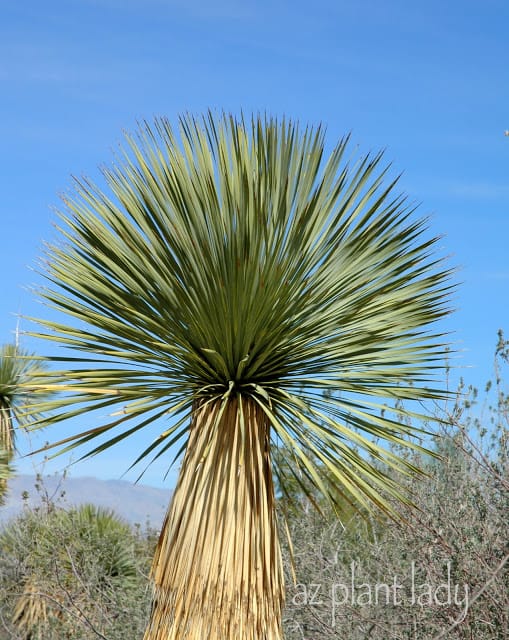
Many succulent plants do well in areas with hot, reflected heat. But a word of caution – just because a plant is a succulent (stores water in it’s leaves), does NOT mean that it can handle full sun. However, Soaptree Yucca (Yucca elata) does very well in the hot sun.

This is one of my favorite succulent plants. Red Yucca (Hesperaloe parviflora) is actually not a yucca at all. But it’s succulent leaves make it look like an ornamental grass. In spring and summer red flowers start to bloom.

Chuparosa (Justicia californica) can be seen along the roadsides throughout the desert. They are decorated with orange/red tubular flowers that hummingbirds just love. If they can thrive out in the open desert, they can do very well in your garden.
I hope this list is helpful to those of you who have an area that receives hot, reflected heat that desperately needs a plant. By adding a plant to areas such as these – actually help to cool that area down because the plant actually absorbs the sun’s rays and keeps them from heating up the surrounding wall, rock, etc.
**Please stay away from planting plants such as Hibiscus, Roses, Citrus and Heavenly Bamboo in these areas. They do not do well in areas with hot, reflected heat. However, all of these plants will do very well in north, south and eastern exposures.
If you are reading a plant label at the nursery to see what type of exposure the plant requires, please keep the following in mind. Full sun in the desert is quite different from the full sun experienced in other areas of the country. For example, a Hibiscus shrub that is growing in San Diego, can handle full sun. However, the intensity of the sun coupled with the heat of desert, will make it difficult for a Hibiscus to handle being planted in a western exposure in Arizona.
And so in closing, I hope this list will prove helpful to you as you search for the right plant for that particular area in your garden.
Large Trees and Little Leaves…









